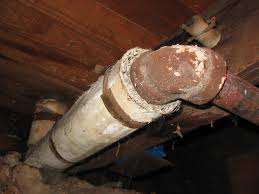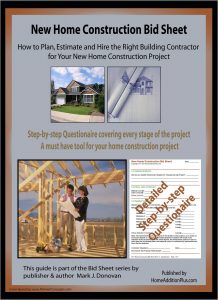How to Check For Asbestos in the Home
By Mark J. Donovan
|
|
Asbestos was used in numerous home building materials for years including insulation, vinyl floor tiles, roofing materials, house siding, drywall, and textured ceiling paints, just to name a few. As a result many home builders and homeowners were exposed to the health hazards of asbestos, including Mesothelioma, Asbestosis, and lung cancer.
Asbestos was used in building materials for a number of reasons, but chief among them was the fact that it is a fire retardant. Unfortunately, however, asbestos is a natural mineral fiber and when it is disturbed, microscopic thin crystal like asbestos particles are released into the air. |
Once in the air, the suspended particles can be inhaled and ingested. After inhalation, the particles can become lodged in the lungs. Once lodged in the lungs various forms of lung illnesses and cancers can occur.
| Checking for asbestos in your home is important, particularly when you plan to disturb the materials that could potentially have asbestos in them. Fortunately today’s new home construction is virtually free of asbestos. Older homes built pre-1979, however, are much more likely to have asbestos in them.
Homes with asbestos in them are not necessarily dangerous if the asbestos laced building materials are left undisturbed or are encapsulated in another safe building product. |
 |
Also, small exposures to asbestos particles will not necessarily results in lung diseases. Typically prolonged exposure to asbestos particles is what causes the various lung problems.
To check for asbestos in your home, it is imperative to hire a licensed asbestos testing firm or asbestos abatement firm. They have the skills and tools to safely check your home for asbestos.
Again, often you can leave the asbestos where it is, as long as you don’t plan on disturbing it. In some cases, such as with vinyl asbestos laced floors, you can simply cover over them with new tile or flooring. In other cases, such as if you plan to remodel a home or room with asbestos building materials in it, you may need to first hire an asbestos abatement contractor to safely remove the asbestos building materials.
To find a home inspector in your local area check the American Home inspector Directory, which maintains a national database of home inspectors. Similarly you can find a home inspector via Renovation Expert’s national database of contractors and home inspectors. Simply fill out their free form and 3 to 4 home inspectors in your local area will contact you. There is no charge or obligation to use this service or any one of the home inspectors.
For help on building a home addition, see HomeAdditionPlus.com’s Home Addition Bid Sheets. Our Home Addition Bid Sheets provide you with the knowledge and information on how to plan a home addition project, and what to look for when hiring contractors. They also include detailed cost breakdown tables and spreadsheets for estimating your own new home addition building costs.
Related Information
Free Home Addition Price Quotes with No Obligation!
Fill out our 3-5 minute quick and easy form, and receive a free price quote on a house addition from one of our prescreened and licensed home addition contractors. This process is free and there is no obligation to continue once you receive your house addition price estimate.

